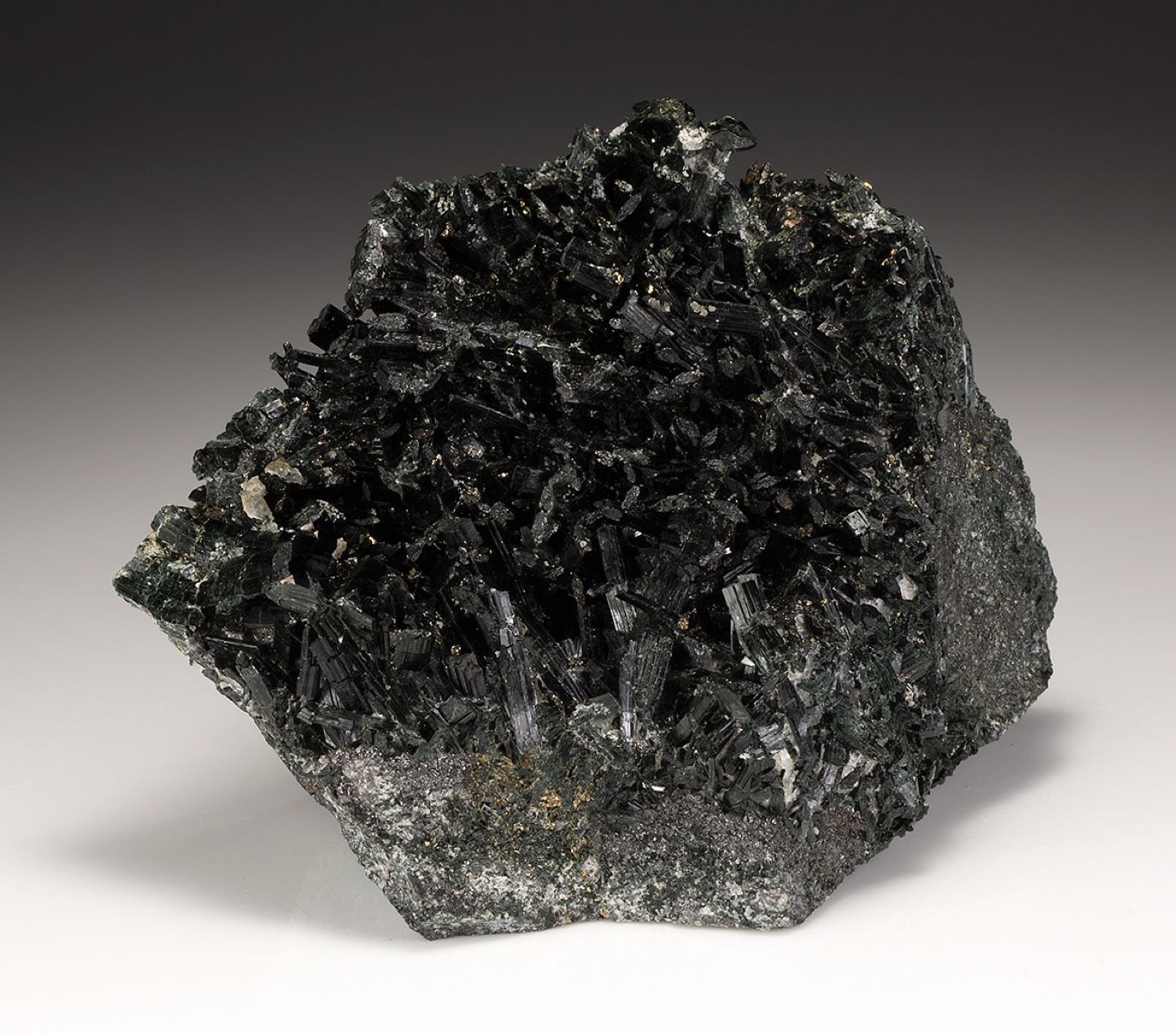
Ferro-Actinolite is a fascinating mineral that belongs to the amphibole group. It’s known for its striking green to black color and needle-like crystals. This mineral is primarily composed of iron, magnesium, silicon, and oxygen. Found in metamorphic rocks, it often forms under high-pressure conditions. Ferro-Actinolite is not just a pretty face; it has practical uses too. It's used in industrial applications, especially in asbestos products, though its use has declined due to health concerns. Collectors and geologists prize it for its unique properties and formation process. Ready to learn more? Here are 30 intriguing facts about Ferro-Actinolite!
Key Takeaways:
- Ferro-Actinolite, a green mineral with iron, is found in rocks and has uses in geology and industry. It's important to handle it safely due to potential health risks.
- This unique mineral, Ferro-Actinolite, is part of the amphibole group and has a fibrous structure. It's found in various countries and can indicate the metamorphic grade of rocks. Safety precautions are crucial when handling it.
What is Ferro-Actinolite?
Ferro-Actinolite is a fascinating mineral belonging to the amphibole group. It is known for its unique properties and striking appearance. Let's dive into some intriguing facts about this mineral.
- Ferro-Actinolite is a member of the amphibole group, which includes minerals like hornblende and tremolite.
- The mineral's name comes from its iron content, with "ferro" indicating iron.
- It typically forms in metamorphic rocks, especially those rich in iron and magnesium.
- Ferro-Actinolite often appears in shades of green, ranging from light to dark hues.
- Its crystal system is monoclinic, meaning it has three unequal axes with one inclined.
- The mineral can be found in fibrous, columnar, or massive forms.
- It has a Mohs hardness of 5-6, making it relatively hard but not scratch-resistant.
- Ferro-Actinolite has a specific gravity of 3.0-3.4, indicating its density.
- It is commonly associated with minerals like quartz, feldspar, and mica.
- The mineral is often found in regions with significant geological activity, such as mountain ranges.
Chemical Composition and Structure
Understanding the chemical composition and structure of Ferro-Actinolite helps in identifying its unique characteristics.
- Its chemical formula is Ca2(Mg,Fe)5Si8O22(OH)2, highlighting its calcium, magnesium, iron, silicon, and hydroxide components.
- The presence of iron gives Ferro-Actinolite its distinctive green color.
- The mineral's structure consists of double chains of silica tetrahedra, which contribute to its fibrous appearance.
- Ferro-Actinolite can undergo alteration to form other minerals like chlorite and serpentine.
- It is part of the solid solution series between tremolite and ferro-actinolite, with varying iron and magnesium content.
Uses and Applications
Ferro-Actinolite has several practical uses and applications, particularly in geology and industry.
- Geologists use Ferro-Actinolite to study metamorphic processes and the conditions under which rocks form.
- The mineral is sometimes used as an asbestos substitute, although it is less common due to health concerns.
- Ferro-Actinolite can be a valuable indicator of the metamorphic grade of rocks.
- It is occasionally used in jewelry, although its fibrous nature can make it challenging to work with.
- The mineral's unique properties make it a subject of interest for scientific research and education.
Occurrence and Distribution
Ferro-Actinolite is found in various locations around the world, often in regions with significant geological activity.
- Notable deposits of Ferro-Actinolite are found in countries like the United States, Canada, and Italy.
- The mineral is commonly found in metamorphic rocks such as schist, gneiss, and marble.
- It can also occur in igneous rocks, particularly those that have undergone hydrothermal alteration.
- Ferro-Actinolite is often associated with other amphibole minerals, forming complex mineral assemblages.
- The mineral's occurrence is typically linked to high-pressure, low-temperature metamorphic environments.
Health and Safety Considerations
While Ferro-Actinolite has many interesting properties, it is essential to be aware of potential health and safety concerns.
- The fibrous form of Ferro-Actinolite can pose health risks if inhaled, similar to other asbestos minerals.
- Proper handling and protective equipment are necessary when working with or around the mineral.
- Long-term exposure to Ferro-Actinolite fibers can lead to respiratory issues and other health problems.
- Regulations and guidelines exist to minimize exposure and ensure safe handling of the mineral.
- Awareness and education about the potential risks associated with Ferro-Actinolite are crucial for those working in geology and related fields.
Final Thoughts on Ferro-Actinolite
Ferro-Actinolite, a fascinating mineral, holds a unique place in the world of geology. Its striking green color and needle-like crystals make it a standout in any collection. Found in metamorphic rocks, this mineral is part of the amphibole group, known for its complex structure and chemical composition. While beautiful, it’s important to handle Ferro-Actinolite with care due to its asbestos content, which can pose health risks if disturbed. Understanding its properties and origins not only enriches our knowledge of Earth’s geological processes but also highlights the importance of safety when dealing with certain minerals. Whether you’re a seasoned geologist or a curious enthusiast, Ferro-Actinolite offers a glimpse into the intricate and often surprising world of minerals. Keep exploring, stay curious, and always prioritize safety in your geological adventures.
Frequently Asked Questions
Was this page helpful?
Our commitment to delivering trustworthy and engaging content is at the heart of what we do. Each fact on our site is contributed by real users like you, bringing a wealth of diverse insights and information. To ensure the highest standards of accuracy and reliability, our dedicated editors meticulously review each submission. This process guarantees that the facts we share are not only fascinating but also credible. Trust in our commitment to quality and authenticity as you explore and learn with us.
